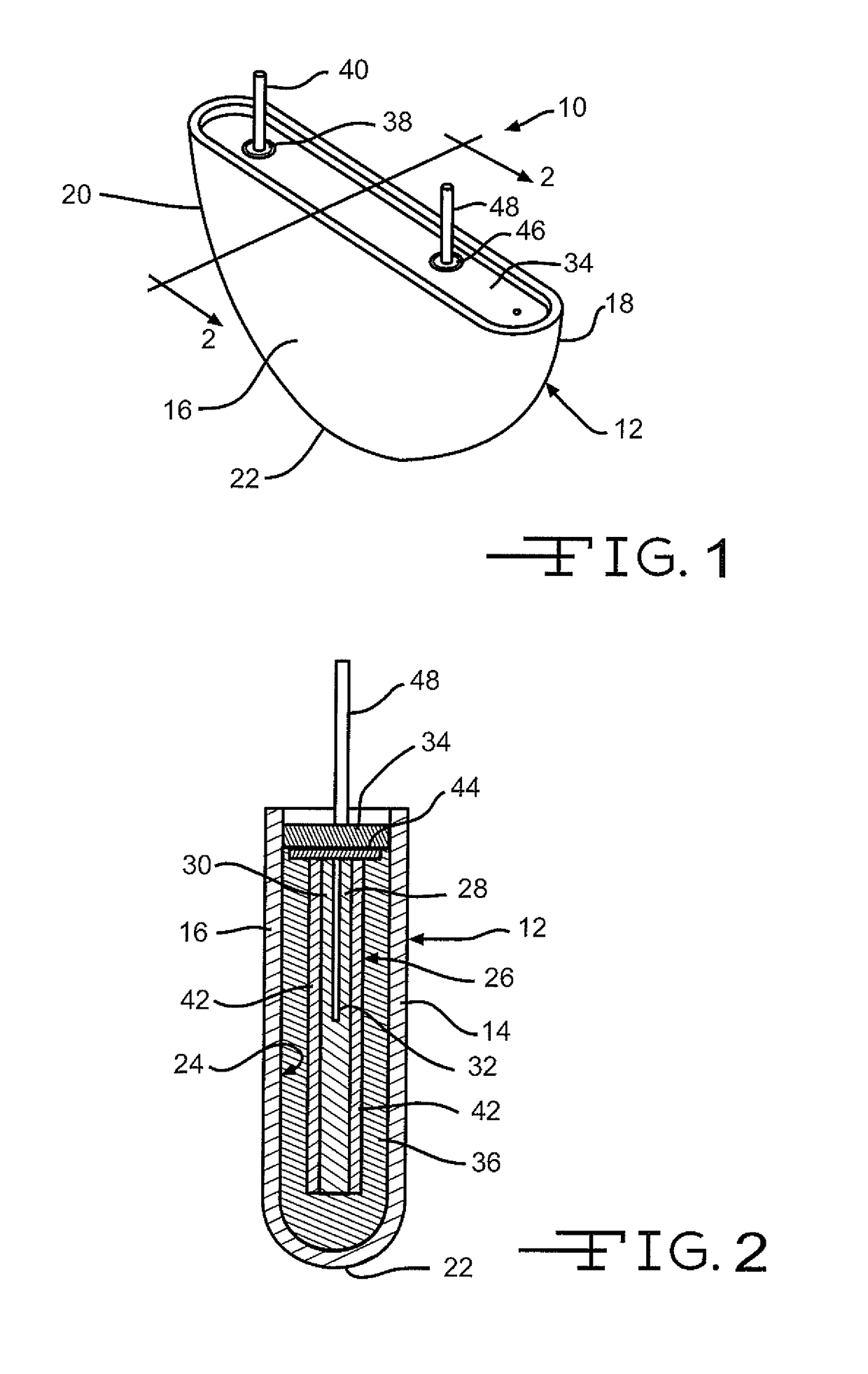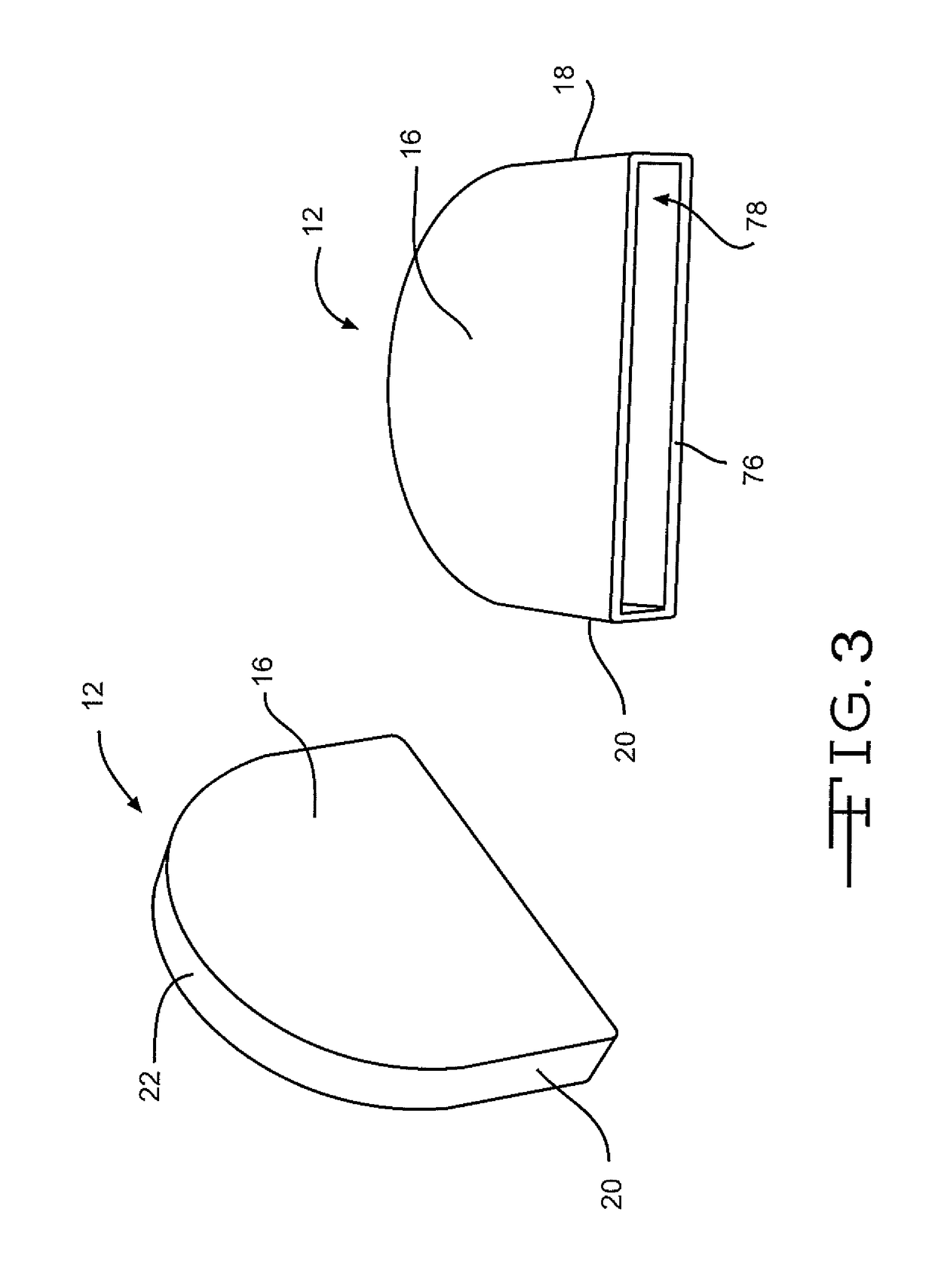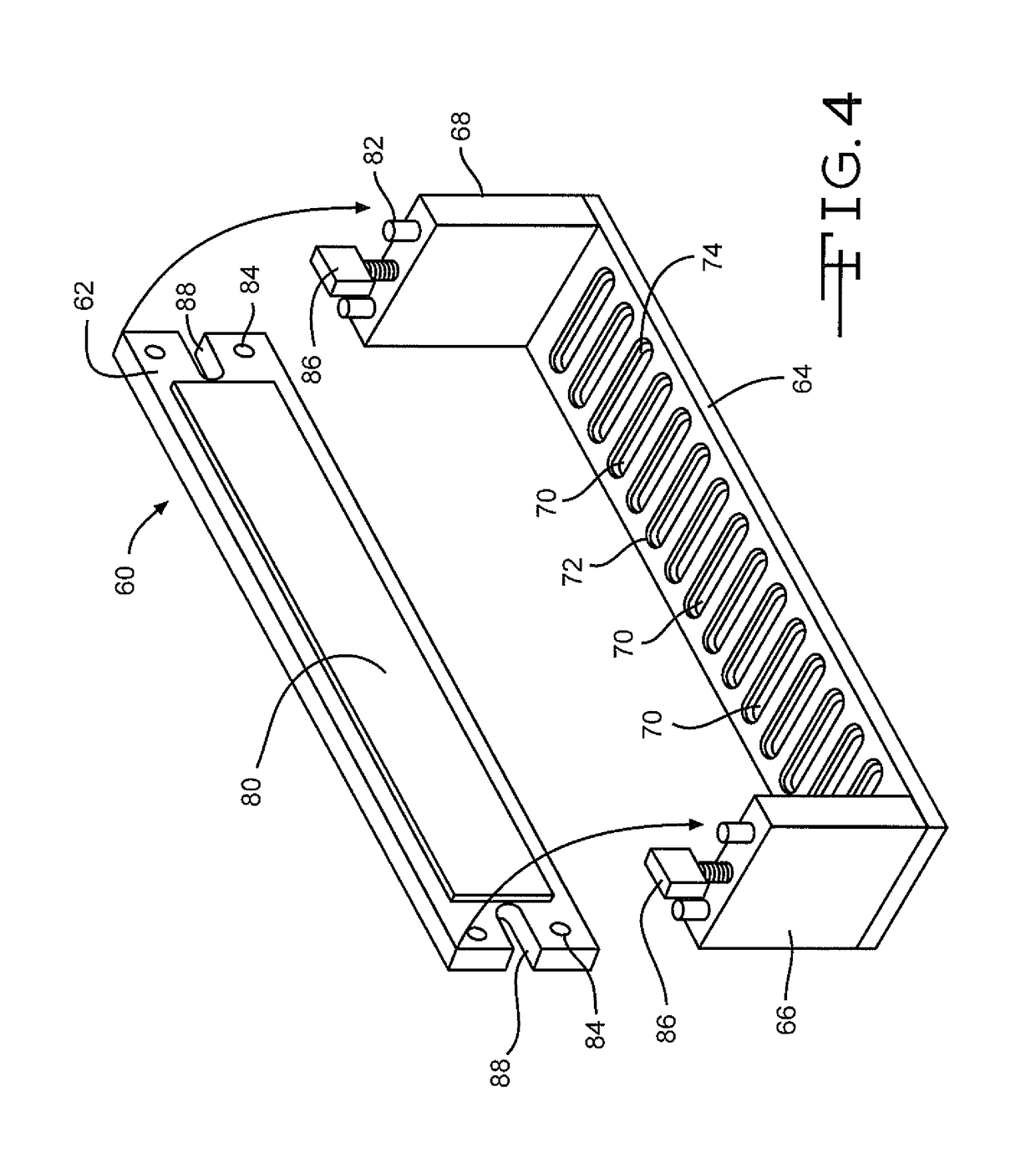Mechanical conditioning by bead blasting lithium iodine cell case
a lithium iodine and battery case technology, applied in the field of solid-state primary cells, can solve the problems of affecting the discharge capacity, the impedance and discharge capacity of low-current drains, and the time-consuming and increasingly expensive process, so as to improve the overall surface area of the case, remove undesirable surface contamination, and improve the overall surface area
- Summary
- Abstract
- Description
- Claims
- Application Information
AI Technical Summary
Benefits of technology
Problems solved by technology
Method used
Image
Examples
example
[0036]Lithium / iodine cells of case-positive configurations similar in construction to the exemplary alkali metal-halide cell 10 just described were used as test vehicles. The cells were constructed to deliver rate capacities of 1.32 Ah. Stainless steel cases were conditioned using the three methods previously discussed, conventional chemical etching, conventional electro-polishing and bead blasting according to the present invention. Three groups of cells were fabricated, group “A” in which the casings were bead blasted according to the present invention, a prior art group “B” in which the casings were electro-polished using a solution of about 20 volume percent perchloric acid and about 80 volume percent acetic acid, and a prior art group “C” in which the casing were treated using Diversey® chemical etchant.
[0037]After fabrication, all cells were preconditioned at 37° C. by discharge under 6.98K loads for a period of about 60 hours, followed by placement under 100K loads for about ...
PUM
| Property | Measurement | Unit |
|---|---|---|
| voltage | aaaaa | aaaaa |
| pressure | aaaaa | aaaaa |
| volume percent | aaaaa | aaaaa |
Abstract
Description
Claims
Application Information
 Login to View More
Login to View More - R&D
- Intellectual Property
- Life Sciences
- Materials
- Tech Scout
- Unparalleled Data Quality
- Higher Quality Content
- 60% Fewer Hallucinations
Browse by: Latest US Patents, China's latest patents, Technical Efficacy Thesaurus, Application Domain, Technology Topic, Popular Technical Reports.
© 2025 PatSnap. All rights reserved.Legal|Privacy policy|Modern Slavery Act Transparency Statement|Sitemap|About US| Contact US: help@patsnap.com



